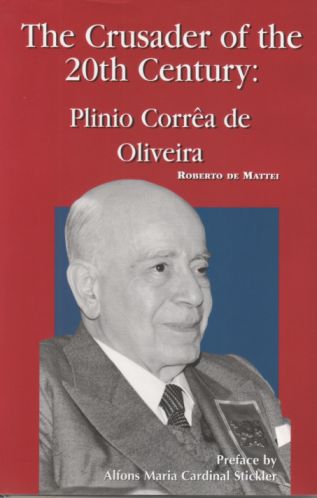|
Chapter VII
12. Towards the century of
the immense triumph
|
|
|
Our Lady of Good Success (Quito, Equador) The theology of history of Plinio Corrêa de Oliveira lies therefore within the realm of the most orthodox doctrine of the Church, with an eminently Monfortian emphasis. It gushes forth from a deep theological meditation and from an even deeper Marian piety that led him to desire ardently, but also to sense prophetically, the Reign of Mary invoked by de Montfort and foretold by the Most Holy Virgin herself in Fatima. It is understood as “an historical age of faith and virtue, that will be inaugurated by a spectacular victory of Our Lady over the Revolution”, an age when “the devil will be driven away and will return to the hellish dens and Our Lady will reign over mankind through the institutions that she will have chosen for this purpose”.147 Up to the last day of his life Dr Plinio wished to inspire his disciples with ardent love for Our Lady and confidence in her triumph. On the eve of the twenty-first century, the first century of the Third Millennium, the ruins of Christendom to which he had dedicated his life appeared resplendent and transfigured to him. “Beyond the highly probable sadness and punishments towards which we advance, we have before us the sacred lights of the dawn of the Reign of Mary: ‘In the end, my Immaculate Heart will triumph’. It is a mighty prospect of universal victory of the royal and maternal Heart of the most holy Virgin. It is a pacifying, attractive and, above all, majestic and exciting promise.”148 To the Brazilian thinker and man of action we can well apply the words written by a contemporary Mariologist with regard to de Montfort: “If the surest criterion for verifying if he is a prophet is ‘the realization of his prophecy’, in other words ‘the verdict of history’ (W. Vogels), we must say that today history advances in the direction foreseen by Montfort”149. As the twentieth century draws to its end, the words with which Plinio Corrêa de Oliveira, in one of his most famous articles, summarized his vision of the future, illuminate the historical turning-point of the Third Millennium with a tragic light, but with one that is dense in supernatural hope: “War, death and sin are preparing once again to destroy the world, this time in greater proportions than ever. In 1513 the incomparable talent of Dürer represented them in the form of a knight that is leaving for war, fully dressed in his armour, and accompanied by death and sin, this last portrayed by a unicorn. Europe, which was even then immersed in the disturbances that preceded the Pseudo-Reform, was heading for the tragic age of the religious, political and social wars that Protestantism triggered off. “The next war, without being explicitly and directly a war of religion, will so affect the sacred interests of the Church that a true Catholic cannot fail to see in it mainly the religious aspect. And the devastation that will be unleashed will certainly be incomparably more destructive than those of the past centuries. “Who will win? The Church? “The clouds we have before us are not rosy. But they animate us with an unconquerable certainty and that is that not only the Church — which is obvious, given the divine promise — will not disappear, but in our days it will obtain an even greater triumph than that of Lepanto. “How? When? The future belongs to God. Many reasons for sadness and anxiety appear before us, even when we look at some of our brothers in faith. In the heat of the struggle it is possible and even probable that there are terrible defections. But it is absolutely certain that the Holy Spirit continues to inspire in the Church admirable and indomitable spiritual energies of faith, purity, obedience and dedication, which at the opportune moment will once more cover the Christian name with glory. “The twentieth century will not only be the century of the great struggle, but above all the century of the immense triumph.”150 Notes: 147) P. Corrêa de Oliveira, Prologue to the Argentine edition of Revolution and Counter-Revolution, p. 31. 148) P. Corrêa de Oliveira, Fatima in una visione d’insieme, preface to A. A. Borelli Machado, op. cit., p. 16. 149) S. de Fiores S.M.M., “Le Saint-Esprit et Marie dans les derniers temps selon Grignion de Montfort”, Etudes Mariales, 1986, monographic issue dedicated to Marie et la fin des temps, vol. III, Approche historico-théologique, p. 156 (pp. 133- 71). “Montfort appears as a man who is open to the great horizons of the history of Salvation and projected towards the future. On the basis — not all being equally sure — of private revelations, of the Bible and of his personal theologicalprophetic charism, he sees the recent times as ‘the kingdom of the Father and of the Son” and — the first in Catholic tradition — he places Marian devotion in the perspective of the second coming of Jesus Christ”. ibid, p. 160. 150) P. Corrêa de Oliveira, “O século da guerra, da morte e do pecado”, Catolicismo, no. 2, February 1951. |
|


